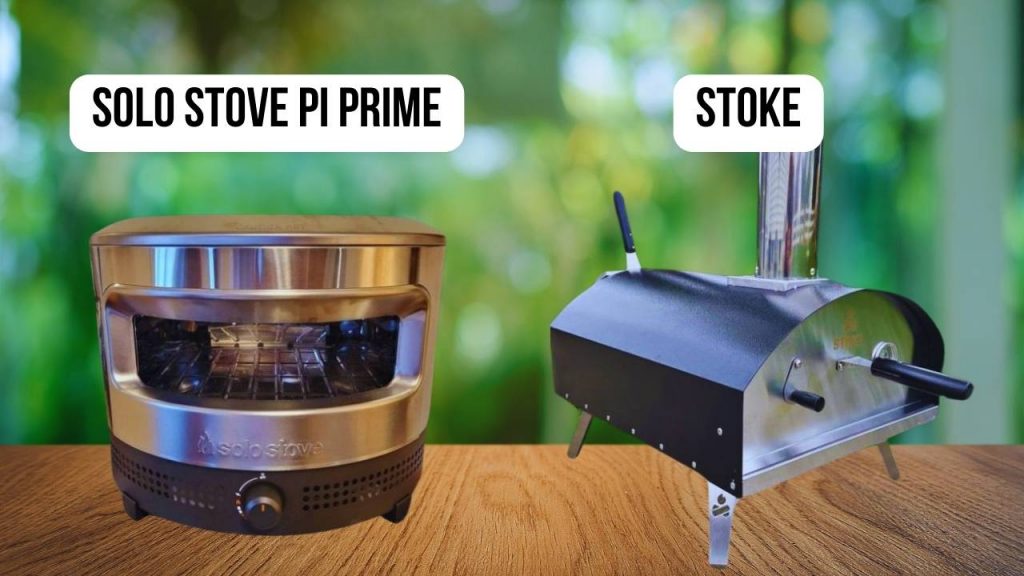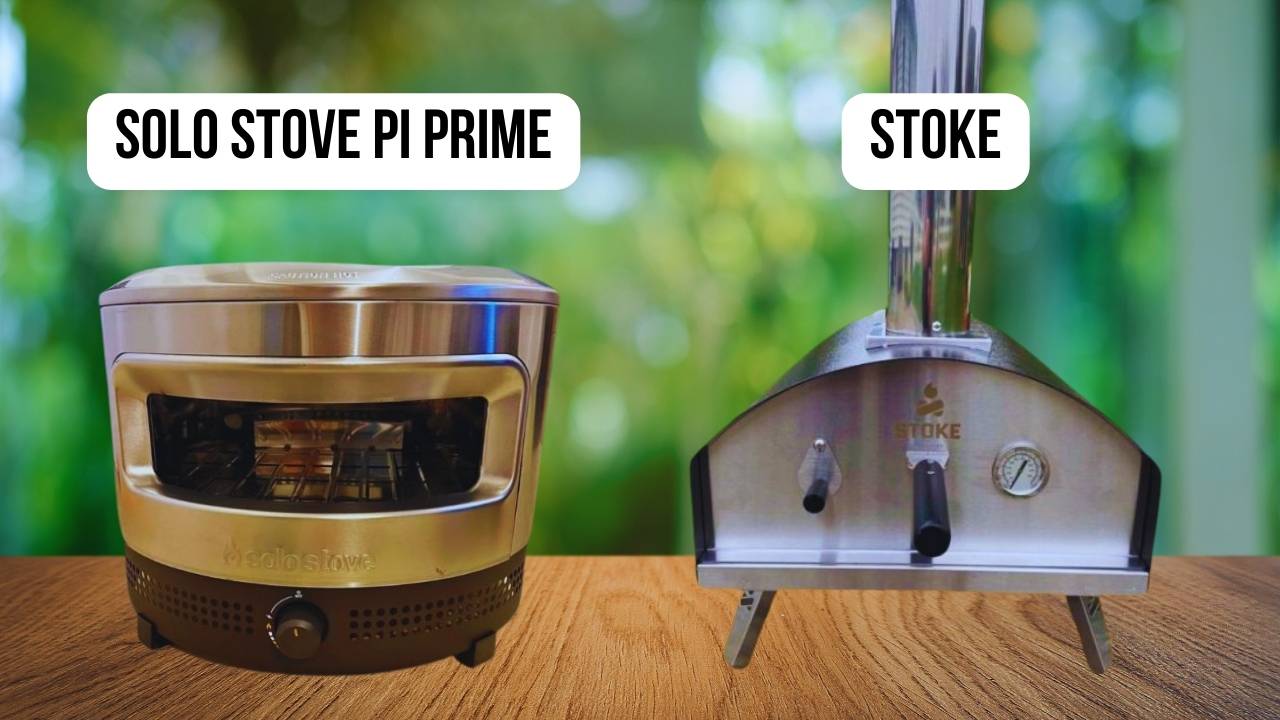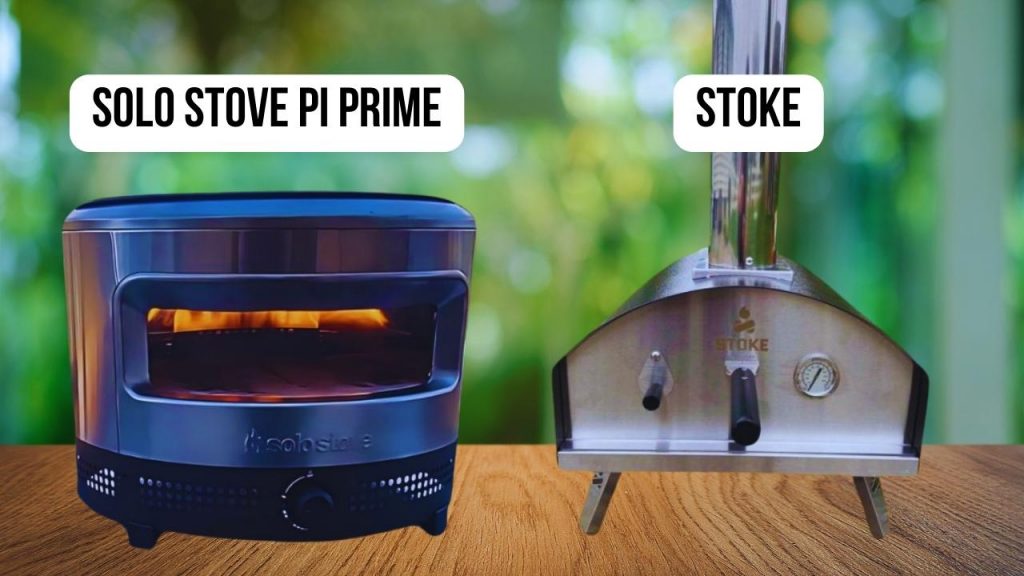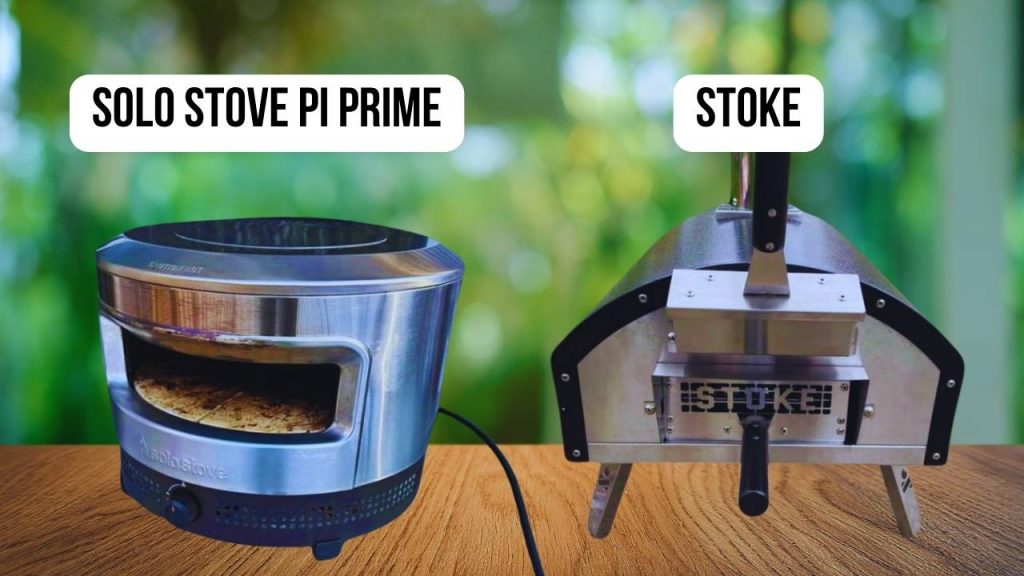As a restaurant chef with over 10 years of experience at my restaurant, Dequte Restaurant LironBoylston, I’ve worked with all kinds of pizza ovens—from heavy-duty commercial models to compact outdoor cookers. In this comparison, I’ll walk you through how the Solo Stove Pi Prime and Stoke pizza ovens performed in my kitchen. I evaluated them based on quality and materials, temperature control, shape, first-time usage impressions, power source, size, ease of cleaning, and finally, I conducted a real pizza cooking test to see how long it takes to make a Margherita pizza in each.
If you’re curious about how I test pizza ovens step-by-step, feel free to check out my separate article dedicated to that process.
The Solo Stove Pi Prime is a propane-powered oven known for its sleek design, quick heat-up time, and consistent performance, making it ideal for anyone who wants wood-fired flavor without the hassle.
The Stoke Pizza Oven, on the other hand, is a versatile outdoor oven that comes in both gas and wood options, offering a nice balance of portability and performance, especially for beginners or weekend backyard chefs.
Here, I’ve done an in-depth comparison of the Solo Stove Pi Prime and Stoke, backed by my test results.
They didn’t rank in the TOP-5 pizza ovens, but these two ovens are still smart buys.
Disclaimer: I use referral links in this article that help keep my blog alive. If you decide to purchase one of these ovens, I’d really appreciate it if you use my links—it won’t cost you anything extra, but I’ll earn a small commission that goes toward creating more hands-on reviews like this.
Solo Stove Pi Prime VS Stoke: Quality and Materials
| The Solo Stove Pi Prime stands out with its high-quality stainless steel construction that offers excellent durability and heat retention. Its refined design looks and feels like a premium outdoor oven. |
The Stoke Wood-Fired Pizza Oven features a decent build with a fiberglass body, but the materials don’t feel as premium. Some users reported issues like paint peeling and surface rust over time.
|
Solo Stove Pi Prime VS Stoke: Temperature Control
| With propane-powered heating, the Solo Stove Pi Prime delivers consistent and easy temperature control. Though the dial isn’t marked, it reliably reaches 900°F in just 15 minutes. |
The Stoke Wood-Fired Pizza Oven claims to hit 900°F, but during our tests, it maxed out at 700°F even after 45 minutes. External weather and wood quality can significantly impact its temperature performance.
|
Solo Stove Pi Prime VS Stoke: Shape
| The cylindrical design of the Solo Stove Pi Prime promotes excellent heat circulation. The flared opening makes sliding pizzas in and out effortless using a 12-inch peel. |
The Stoke Wood-Fired Pizza Oven has a large wall between the flame and the cooking stone, which reduces direct heat transfer and affects overall baking consistency.
|
Solo Stove Pi Prime VS Stoke: First-Time Usage Impressions
| Our first cook with the Solo Stove Pi Prime was impressive—it was simple to set up, quick to preheat, and delivered a Margherita pizza with beautiful browning and melted cheese. |
The first use of the Stoke Pizza Oven showed some promise but fell short with undercooked bottom crusts and slower cooking time. Still usable, but not as seamless as the Pi Prime.
|
Solo Stove Pi Prime VS Stoke: Power Source
| The Solo Stove Pi Prime is propane-only, which means steady heat, low maintenance, and quick start-up with no need to babysit the flame. |
The Stoke Wood-Fired Pizza Oven runs on wood, offering great flavor but requiring more manual effort and cleanup. There is a gas option, but we tested the wood version.
|
Solo Stove Pi Prime VS Stoke: Size
| The Solo Stove Pi Prime is compact and manageable at 15.5″ tall, 20.5″ wide, and 30 pounds—portable enough for any backyard setup. |
The Stoke Pizza Oven is also portable, measuring about 18.2″ tall and weighing just over 40 pounds. Still manageable, though slightly bulkier.
|
Solo Stove Pi Prime VS Stoke: Ease of Cleaning
| Cleaning the Solo Stove Pi Prime is a breeze. The pizza stones can be brushed while warm, and the stainless body wipes down with soapy water. |
The Stoke Wood-Fired Pizza Oven is easy to clean too, but dealing with ash and soot from the wood adds a bit more work compared to the Pi Prime.
|
Pizza Cooking Test

To fairly evaluate both ovens, I tested them using a classic Margherita pizza with the same dough and ingredients.
The Solo Stove Pi Prime preheated impressively fast—it reached cooking temperature in just about 15 minutes. Once the stone was hot enough, I launched the pizza, and it cooked in just 90 seconds. The results were excellent: the crust was beautifully crisp with leopard spotting, the cheese melted evenly, and the flavor had that satisfying balance of a crunchy base and gooey toppings. It was exactly what I expect from a high-performance propane pizza oven.
The Stoke Wood-Fired Pizza Oven, on the other hand, took significantly longer to heat up. It reached its peak temperature—around 700°F—after about 45 minutes. When I launched the same style Margherita pizza, it took just over 2 minutes to cook. The top was nicely blistered and the cheese was well-melted, but the underside was noticeably pale and slightly doughy. The flavor still had that wood-fired charm, but the texture wasn’t as balanced compared to the Solo Stove.
The Solo Stove Pi Prime delivered a faster, more consistent bake with a superior crust texture. The Stoke provided good flavor but required more attention and time, and the results weren’t quite as refined.
How We Tested

As a restaurant chef with over a decade of experience at Dequte Restaurant LironBoylston, I approached this comparison with a focus on real-world performance. To ensure fairness, I used the same type of dough, sauce, and toppings—specifically, classic Margherita pizza—for both ovens.
Each oven was set up outdoors on a level, heat-safe surface. I followed the manufacturer’s preheating instructions, monitored internal temperatures using an infrared thermometer, and took note of how evenly the stone heated. I paid close attention to how each oven handled during the first cook—how intuitive the controls were, how easy it was to launch and turn the pizza, and whether the crust and toppings cooked evenly.
I also factored in convenience, such as the time it took to assemble, clean, and reheat between bakes. By recreating the same cooking scenario for both the Solo Stove Pi Prime and the Stoke Pizza Oven, I was able to assess not just their features, but how they truly perform in a real kitchen environment.
Conclusion

In the end, whether you choose the Solo Stove Pi Prime or the Stoke Pizza Oven comes down to your personal preferences and needs. Both ovens offer great features for outdoor pizza-making, but the Solo Stove Pi Prime stood out slightly more in my tests for its consistent performance, quick heat-up time, and durable build.
If you decide to purchase one of these ovens, I would really appreciate it if you used my referral links. It helps keep my blog alive and supports the work I do—at no extra cost to you.
Be sure to browse the list of the best pizza ovens.



